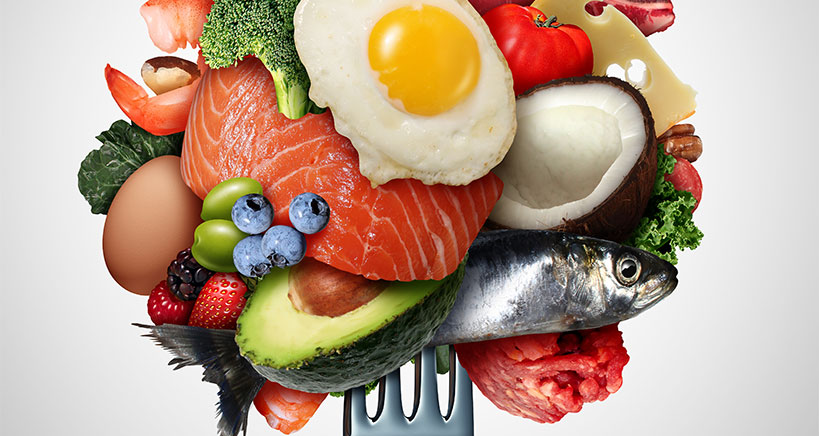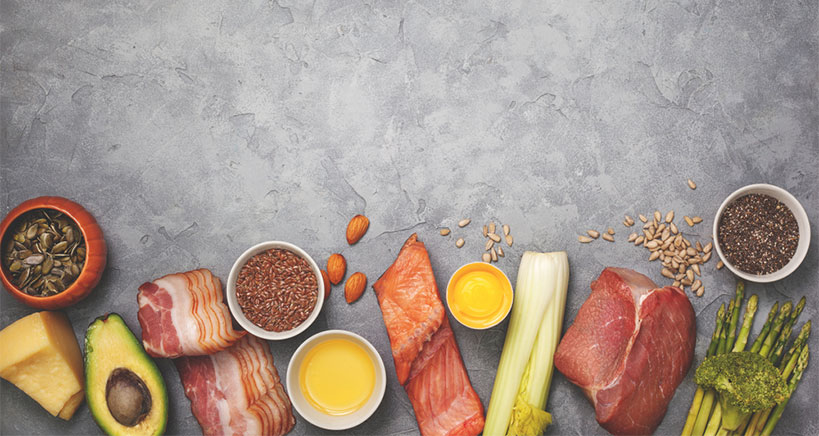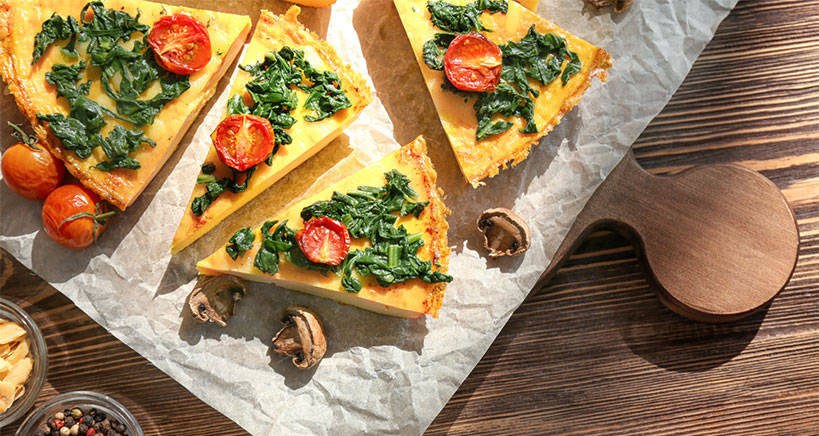
If you’re looking for information on how to make your restaurant keto-friendly, you’ve come to the right place. Whether you own a catering service, fast-casual restaurant, pizza shop, bakery, food truck, hotel, or fine dining establishment, the popularity of ketogenic diets is soaring – and so is demand for menus that cater to the keto community.
Read on and help promote your business by learning all you can about keto-friendly foods and beverages, what is allowed and not allowed on the meal plan, and what menu choices will serve the needs of your keto customers.
The fact is that for most people, keto is more than just a diet; it is a lifestyle. And given the limited number of appropriate eating-out accommodations currently available, your restaurant can become the service they rely on, which will have a positive impact on your brand reputation and hopefully pave the way for a loyal, returning customer base. Moreover, since the majority of today’s diners do their food research online, you can further cash in on this opportunity by posting keto-friendly tips and menu selections on your website or Facebook page.
Special Diets Flood the Food Industry
If you work in foodservice, you are already well aware of the sea of special diets that have flooded the food-and-beverage industry, requiring restaurant owners to step up to the plate and deliver the goods for all their customers. From gluten-free to dairy-free, from nut- and allergy-free to wheat-free and soy-free, from plant-based to non-GMO, from keto to paleo, and from vegetarian to vegan, the list of special diets goes on and on. Savvy food industry pros are doing their homework, learning all about the various dietary restrictions, how to replace taboo ingredients with acceptable alternatives, and more. If you want to keep up with the times and stay ahead of the competition, it’s critical that you know what to do – and more importantly, what to serve.
U.S. Restaurants Rise to the Keto Challenge
If you are new to ketogenic diets, you are not alone. The good news is that creating a keto menu is quite easy and won’t cost much since you can continue to use many of your familiar ingredients and serve many of your chef’s favorite dishes. The key to understanding keto diets is in the restrictions, for at its core, the ketogenic diet is an extremely low-carb, high-fat diet. In the words of New York bistro owner Marcus Guiliano: “We have a lot of Keto guests that come in. The main key is to make sure your chef and kitchen staff understand the main guidelines. Of course, the big one is the carb restriction.” The restaurant has also replaced restricted Omega 6 oils with quality olive and coconut oils.
If you are hungry for a taste of what some other U.S. eateries are dishing out, do some research on the menu options being offered by businesses such as Green Chef, Plated, and HelloFresh. There are even some niche restaurants that cater specifically to the keto community – these include the L.A.-, Seattle-, and Santa Monica-based Bulletproof Coffee Cafe, as well as Sioux Falls Boss’ Pizza & Chicken, where customers can order low-carb salads, cauliflower breadsticks, and cauliflower crust pizza.

Ketogenic Diet Guide for Foodservice Professionals
So what exactly is a ketogenic diet and how can you adjust your menu to ensure hassle-free ordering for all your customers? Here, in a nutshell, are the essential details.
Following a ketogenic food plan means drastically reducing carbohydrate intake and dramatically upping fat intake. The goal is to put the body into a metabolic state of ketosis, whereby the body burns stored fat and uses ‘ketone bodies’ for fuel instead of the usual carbs. Myriads of studies indicate that this diet helps people lose weight and may have benefits for a wide range of health conditions, including epilepsy, diabetes, heart disease, cancer, Alzheimer’s disease, and Parkinson’s disease.
In an age where ‘no-fat’ and ‘low-fat’ have reigned supreme, you may be wondering how so many of today’s health-conscious consumers are willing to comply? The answer is that while dietary fat in popular culture has gotten a bad wrap, provoking fears of weight gain and heart disease, it is actually the body’s preferred source of energy when carbs are inaccessible. The Keto diet uses this information to ‘trick’ the body into burning fat by limiting carb intake to less than 5-10-% per day, allowing protein intake of 20-25% per day, and capitalizing on fat intake to the tune of 70-80% of the calories consumed on a daily basis.
Keto Diet Risks
Are there risks involved in following a keto eating plan? According to the experts, the answer is: Yes. While the diet is generally associated with positive health results, not everyone reacts in the same way and some of the inherent dangers include being high in saturated fat, low in fiber, deficient in certain vitamins and minerals, and hard on the liver and kidneys.
Yet, while many fad diets have come and gone without gaining traction, keto has been in play for over ten years and is based upon solid nutritional science. Most importantly for foodservice managers, keto diets are trending and consumers are clamoring for menus that accommodate their needs.
Foods to Avoid on a Keto Diet
Let’s start with the food consumers must AVOID or greatly reduce, and then sink our teeth into the many types of foods, beverages and dishes you can freely offer them. The list, comprised of items that are high in carbs, includes
- Wheat-based products, cereals, grains, rice, pasta
- Breads, tortillas, taco shells, burritos, hash browns, breaded chicken/chicken nuggets
- Root vegetables/tubers (i.e. potatoes, sweet potatoes, parsnip, carrots)
- Legumes and beans (i.e. kidney beans, lentils, chickpeas, peas)
- Sweet salad dressings, i.e. French, poppy seed, honey mustard, and raspberry or balsamic vinaigrette
- Fruit juices and sodas
- Cake, cookies, ice cream, candy
- Most fruits, with the exception of small portions of berries
- High-fat and high-sugar condiments and sauces (i.e. ketchup, barbecue sauce)
- Most alcoholic beverages

Keto-Friendly Menu Options
What CAN consumers eat on a Keto diet? A lot! You can base their meal offerings on the following permissible choices, with a preference for whole, unprocessed, single-ingredient foods:
- Lean and high-fat meats and poultry
- Fish and fatty fish, i.e. tuna, salmon, trout, mackerel
- Pastured or Omega-3 whole eggs
- Full-fat yogurts
- The gamut of nuts and seeds, i.e. almonds, walnuts, chia seeds, flax seeds, pumpkin seeds
- Heavy creams, sauces, and butter from grass-fed sources
- Unprocessed cheeses such as cheddar, mozzarella, blue, and goat
- Avocado and guacamole
- Extra virgin olive oil and plenty of saturated fats from coconut, avocado, palm, butter, and cocoa butter oils
- Ranch, Blue Cheese, Caesar, and vinaigrette salad dressings
- Leafy greens and low-carb veggies, including cauliflower, broccoli, Brussels sprouts, spinach, celery, cucumber, asparagus, kale, Swiss chard, peppers, mushrooms, garlic, onions, and summer squashes
- Salt, pepper, most herbs and spices
- Dark chocolate
- Water, sparkling water, tea, coffee, club soda
- Low-carb alcoholic beverages such as champagne, dry wine, light beer
- Supplements such as MCT oil added to coffee, drinks, or yogurt; whey protein added to yogurt and shakes
Sample Keto Menu Ideas
As your cooks don their chef’s hat -and their thinking caps – here are some sample breakfast, lunch, dinner, and dessert ideas to help stir their creative juices as they compose your restaurant’s keto-friendly menu.
Breakfast: Goat cheese omelet with a side order of basil-spiced tomatoes; keto milkshake; scrambled eggs with peppers, onion, salsa sauce, and tofu; sautéed green vegetables sprinkled with Parmesan cheese
Lunch: Carrot and celery sticks with guacamole or salsa dip; salad and cheese plate; chicken salad; feta cheese salad with olive oil; keto milkshake with almond milk, cocoa powder, and peanut butter
Dinner: Salmon steak with asparagus and melted butter; grilled chicken and vegetables with pesto; bun-less burgers with a side order of veggies and guacamole
Dessert: Strawberries and cream; assorted nuts; assorted cheese board
Keto Menu Tips
Here are some more inside tips and tricks of the trade:
Replace hamburger buns with lettuce wraps; offer double burger patties; offer extra melted butter on veggies and main dishes; drizzle olive oil liberally on salads, side dishes, and main courses; offer a variety of herbal teas and coffee with heavy cream or whipped cream; feature a variety of low-carb, high-fat keto bowls; create stir fries and curries from meat, seafood, bean sprouts, and sautéed vegetables. Finally, learn all you can about adding Indian ghee to your recipes – it is clarified butter made from pure fat and perfect for a keto diet.

Recipe for Crustless Keto Quiche
And now what you’ve all been waiting for: A delicious keto recipe you can serve for breakfast, lunch, or supper!
Ingredients:
- 6 large whole eggs
- 1/2 cup unsweetened milk of choice
- 1/2 cup heavy cream
- 1/4 cup parmesan cheese
- 3 tbsp. coconut flour
- 3/4 tsp. salt
- 1/4 tsp. pepper
- 2 tbsp. olive oil
- 1 cup chopped asparagus
- 8 oz. thinly sliced mushrooms
- 1 thinly sliced small onion
- 1/4 cup sliced sundried tomatoes
- 1 cup goat cheese
- 1 cup mozzarella cheese
Instructions
- Preheat oven to 350 degrees
- In a large bowl, combine eggs, milk, cream, parmesan cheese, coconut flour, salt, and pepper. Mix until smooth and set aside.
- In a skillet, under medium heat, combine olive oil, asparagus, mushrooms, onion, and sundried tomatoes. Cook 3-4 minutes until slightly tender. Remove from heat and cool.
- Fold cooked vegetables and goat cheese into egg mixture. Pour into a baking dish and top with mozzarella cheese.
- Bake 40-45 minutes until golden brown.
- Savor and enjoy!